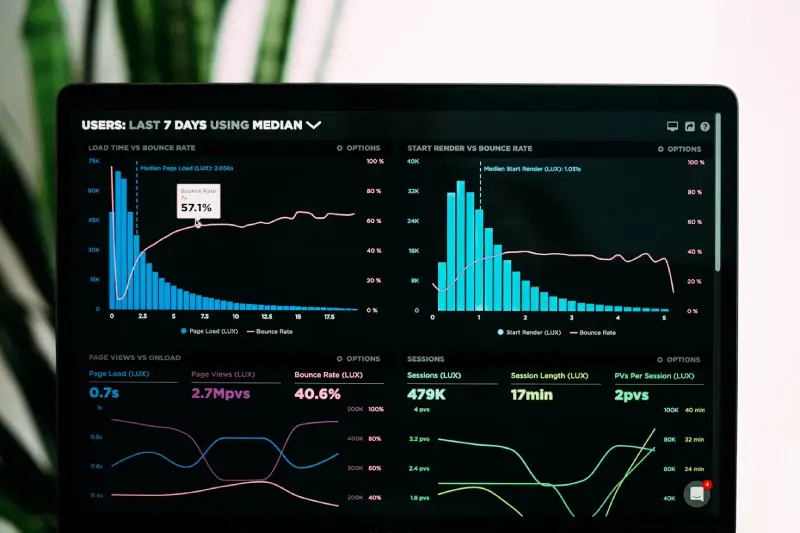You would probably be familiar with the word queue if you have been in a long waiting line. But have you ever heard of queue data structure? Like a physical queue, computer science entertains a kind of data structure referred to as a queue that considers a similar principle concerning first, in-first out the order. This article will give you all the information regarding queue data structure.
What is queue in data structure? Understanding this concept is essential in the oeuvre of computer science as it encompasses various operations such as data processing, network systems and operating systems. If you are looking forward to getting an extensive idea about queue data structure, a thorough reading till the end will help you exceedingly!
What Is A Queue Data Structure?
A queue data structure is the first concept that must be cleared to move into deeper details. But what is the queue in the data structure? Well, to answer it in the simplest term, it is linear structured data in computer science that adopts the first-in-first-out order principle.
It is an assembly of elements that embraces two central operations. One is enqueued, adding an element to the end of the queue, and one dequeue, removing an element from the queue’s front.

After knowing what is queue in data structure it is essential to know about its function. The function of a queue data structure encompasses the holding of elements in a sequence, where the element that has been inserted first is the first one that must be removed. Application of queue in the data structure is made specifically in data processing, networking and operating systems.
For instance, in an operating system, a print job queue helps in the execution of print jobs in the perfect order as they have been requested. Also, the use of queue data structure in data processing takes care of a huge amount of transactions in an efficient and controlled manner.

Get curriculum highlights, career paths, industry insights and accelerate your technology journey.
Download brochure
Why Learn Queue In Data Structure?
Securing knowledge about queue data structure has become extremely important for many reasons. Here are some top reasons why learning queue in data structure is essential:
1. Increased Efficiency:
Queues have extensive use in real-world applications, especially those which deal with a huge amount of data. Therefore learning it can be rewarding as one can understand the method behind how it works and the basic operation involved. This, however, ensures that one writes optimised and efficient code.
2. Works As A Good Problem Solver:
Queues are often used for designing algorithms and solving various problems. Therefore gaining knowledge about what is queue in data structure will help you develop data structure and algorithms and solve problems.
3. Use In Real-World Applications:
In various real-world applications, such as networking, operating systems and data processing, queue data structures have extensive use. Therefore, knowing about this will make one understand the system’s working and the procedure involved in handling the data.
4. Technical Interviews:
During technical interviews, a queue data structure is an area from where questions are frequently asked. Therefore people who are ambitious about getting hired as software engineers or in computer science roles must know this. This will make one prepare better for technical interviews in a much more efficient way and increase the chance of recruitment.
Types of Queues in Data Structure
Queues in the data structure can be divided into various types, each retaining its applications and characteristics. In this guide of understanding what is Queue in Data Structure let us see some of the most common types of the queue are as follows:
1. Simple Queue:
This is the most basic type of queue, which follows the first-in-first-out principle. It encompasses two operations, dequeue, where an element is removed from the front of the queue and enqueues, where an element is added to the rear of the queue.
2. Circular Queue:
This kind of queue makes use of circular buffers for storing elements. It, too, consists of a front and a rear, and when the rear reaches the end of the buffer, it wraps again to the rear. The memory is used efficiently and can be used only after the queue is full.
3. Priority Queue:
This is a type of queue where every element possesses a priority. Higher priority elements are dequeued from lower priority ones. These queues are often used for resource allocation and scheduling.
4. Concurrent Queue:
A concurrent queue allows access to multiple threads simultaneously.
5. Double Ended Queue:
Here elements are allowed to be removed or added from both ends. It is also referred to as deque. This can be extremely useful for certain applications and also allows flexible management.
6. Delay Queue:
It allows the addition of elements with a delay period. Delay queues especially prove beneficial for time-based applications and scheduling.
Here the dequeue of elements only happens after the delay period elapsed.

The best way to learn more about data science, artificial intelligence, and machine learning is to opt for integrated programmes offered by various online platforms.
Basic Operations of Queue Data Structure
In this guide of understanding what is Queue in Data Structure, let’s look at the basic operations are as follows:
- Enqueue: This attaches an element to the queue’s rear.
- Dequeue: This removes an element from the queue’s front.
- Peek: Returns the element at the queue’s front without eliminating it.
- Is Empty: It returns true if the queue is empty. If not, false.
- IsFull: If the queue is full, returns true; if not, false.
The functions of all these operations in the queue data structure revolve around the addition and removal of elements from the queue and checking their status. The basic operation of a queue is efficient and simple, which makes it beneficial for coping collections of elements that must be processed in a certain order.
Implementation of Queue:
This is one of the basic operations of queue data structure. Implementation of the queue can be done in two ways. These are:
Sequential allocation can be done with the use of an array. However, it can organise elements of only limited numbers.
This is implemented with the use of a linked list. This possesses the ability to organise elements of unlimited numbers.
Also Read: Advantages and disadvantages of array
Common Algorithms Used In Queue Data Structure:
In the queue data structure, several algorithms may be used. Here are the ones that are widely used.
- Breadth First Search:
This is commonly known as BFS, in a queue data structure, a graph traversal algorithm that uses a queue to traverse graphs in a breadth-first manner. It commences at a specifically given node, and before going to the next level, it visits all the nodes at that level.
- Queue Sorting:
This algorithm is used in sorting the elements of a queue.
- Queue Reversal:
It helps in reversing the order of the elements in a queue. The process involves dequeuing an element and pushing it back on a stack. This is followed by dequeuing the elements and enqueuing them into the queue.
- Queue-Based Simulation:
This technique is used to simulate scenarios from the real world by using a queue and a data structure. This is, however, used in the simulation of the flow of traffic, customer service queues, and product lines, among many more.
Application of Queue in Data Structure:
In this guide of understanding what is Queue in Data Structure, let’s see the major application of queue in data structure in detail, go through all the points discussed below:
- Application of queues in Job Scheduling:
For scheduled jobs, the application of queues in data structure is often used where the presence of each job is done as a process and is added to a queue. The first job is considered first, and the next job is processed once completed.
- Application of queues in Buffer:
Queues are used as buffers for the storage of incoming data before processing. For instance, in networking, to hold incoming packets, a queue is used before forwarding them to the following destination.
- Application of queues in Printer Spooler:
This application of queue in data structure takes care of various print requests from numerous users. To store the print request, a queue is used, and the queue is processed before receiving.
- Application of queues in Call Centre Routing:
Call centres make use of queues to manage incoming calls. It helps add the callers to the queue where they are all answered in the order they are received. This is one of the essential applications of queue in data structure.
Characteristics of Queue in Data Structure:

1. Task Scheduling:
Here, a queue is used to process and store tasks for future execution. Several queue data structure characteristics, like the first-in-first-out principle and limited access, help manage the order of execution.
2. Allocation Of Resources:
The function of queues is also important for managing the allocation of resources like memory or CPU time. Also, to prevent the underuse or overuse of resources, a queue’s underflow/overflow and size limitation prove beneficial.
3. Batch Processing:
Batch processing concerns holding a batch of jobs to be processed in one go. The first-in-first-out principle ensures whether an order is maintained for processing the jobs in the order they have been previously received.
4. Event Handling:
Here, a queue holds events that must be processed in order. Again, the first-in-first-out principle ensures that events are processed exactly in the order they have been received. Here are some Exciting Data Science Projects for Beginners.
5. Message Buffering:
Here, a queue holds incoming messages until they are ready for processing. The queue’s underflow/overflow and size limitation characteristics assist in managing the message flow and preventing the loss of messages due to overflow.
6. Management Of Traffic:
The use of queues can also be beneficial for traffic management, i.e. coping with the network’s traffic flow. Here too, the overflow/underflow characteristics and size limitation of the queue assists in protecting against congestion on the network and loss of the packet.
To know more about queue data structure and algorithms, you can opt for Data Science Course.
Challenges Faced in Queue Data Structure:
Apart from its wide usability, there are also some challenges that systems, designers, and programmers face while working with or implementing queues.
1. Memory Management:
This is one of the most significant challenges in a queue data structure. Here, new elements are added from one end and removed from another. The continuous movements of elements can lead to an overflow of memory, leading to data loss and system crashes.
2. Synchronisation:
As various threads can access queues simultaneously in a multithreaded environment, an issue regarding synchronisation might crop up. For this, the implementation of a proper locking mechanism is necessary.
3. Complexity Regarding Time:
One of the most crucial aspects is the performance of the queue data. The complexity of time concerning dequeue and enqueue must be optimised for efficient execution.
4. Queue Overflow and Underflow:
Queues can overflow or underflow when they are full or empty, respectively. To prevent this, proper error-handling mechanisms need to be put in place.
Conclusion:
Therefore although a queue data structure proves essential, it has some challenges that must be considered while using it.
FAQs
queue can be implemented in computer memory using linked lists or arrays. Both come with their advantages and disadvantages. They must be according to the requirements of the specific application.
A stack and a queue are both abstract data structures used to organise and store data. The central difference between these two is how they access and store elements.
There can be varied applications of a queue data structure; these are:
- Task scheduling
- Message Passing
- Multiprogramming
- Breath-first search
- Simulations
- Buffering
This kind of queue data structure entertains the connection between the rear and front pointers of the queue, forming a circular loop. Elements are stored and retrieved circularly, unlike in a linear manner in a regular queue.
Updated on September 30, 2024











